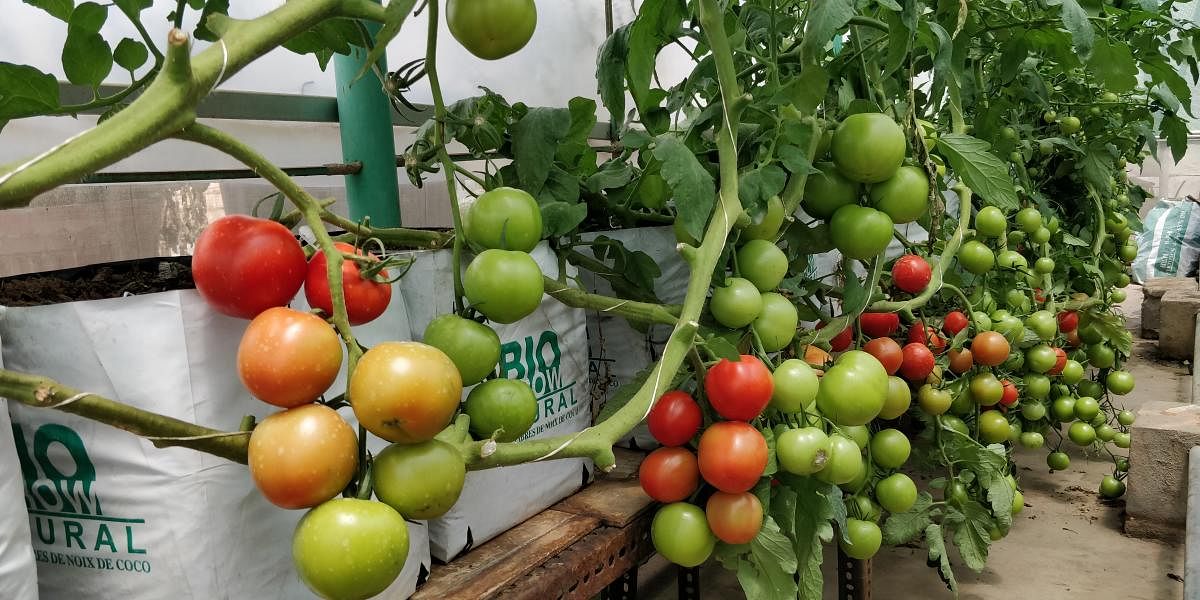
Many of us would love to cook greens every day if only we did not have the hassle of cleaning them. The accompanying weeds, mud, and the enormous amount of water needed to clean it puts us off. Is it possible to grow greens without soil? The answer is in hydroponics, a way of growing plants without soil known since 1627.
Hydroponics in India has become popular in the last several years. Manikandan Pattabhiraman is one of the people who has been popularising this technique. I’ve been following him on social media, have attended his online course, and adopted some of his techniques to grow vegetables in my garden. In an interview with DHoS, he tells us more about his journey. Excerpts
What is hydroponics? How is it different from working in soil?
In its original sense, hydroponics is a way of feeding plants based on their nutritional requirements. When we grow plants in fresh soil, we water them regularly, and the plants absorb the nutrients. It so happens that the nutrients get leached down due to the constant watering and diminish with time. In hydroponics, we choose cocopeat or water as the growing medium. These are inert mediums and lack natural nutrients. Thus the responsibility of feeding nutrients to the plants falls on the gardener. The gardener feeds the plants a precise amount of fertiliser in appropriate quantities at the right stage to the plant. The nutrients are continuously replenished and provide an ideal ground for the plants to grow. The final product obtained is nutritious and tasty. It also minimises wastage and stays fresh for extended periods.
Which are the vegetables and fruits that one can grow?
Using hydroponics, you can grow vegetables, ornamental plants, or even fruit trees. We have successfully cultivated everything from leafy greens like spinach, coriander, mint, lettuce, celery, parsley, cabbage, cauliflower, and broccoli to vegetables such as tomatoes, capsicum, beans, radish, potatoes and gourds as well as fruits like papaya, pomegranate, guava, lemon etc.
How can apartment dwellers and people with limited space use hydroponics?
People living in apartments lack open space with direct sunlight. The only usable space is their balconies. Depending on the direction in which the balconies face, appropriate vegetables can be grown. Though there are many methods, the simplest growing system is a container that holds a soil-less medium such as cocopeat. Once installed, it supports the plant, has access to water and supplies oxygen to the roots. It is called the substrate culture system and is easy to maintain.
We all know that if you pull out a plant from its growing environment, the roots get disturbed, and the plants will not survive when you replant them. Fortunately, this doesn’t happen in hydroponics. I remember during a demo session in a school about hydroponics, I showed the students and teachers how plants grow in a substrate system. They were pleasantly surprised that one could take the plant out of the growing system, inspect its roots, structure, colour, and branches, and then put it back where it would continue to grow.
Many of us compost our vegetable waste at home. Is there a way to incorporate homemade compost in hydroponics?
Compost made from vegetable waste is usually more balanced in its fertiliser content than animal manure. Therefore it is preferred. It is enough if we supply the nutrient mixed water to the plants once in three days instead of every day. The frequency can be increased or decreased based on how the plants respond. We have also observed that the concentration in which we add hydroponic nutrients to the growing medium is safe for earthworms (in compost).
What drew you to hydroponics?
I have been fond of gardening since my school days. I got into hydroponics around 2008 because of the potential it offers. I had moved to Bengaluru at that time and the weather was suitable to experiment with many varieties of plants and nurture my gardening skills. Hydroponics is versatile. One can get the best quality of products with optimum resource usage. Its ability to grow excellent produce without soil makes it ideal for urban farming.
Any tips for beginners?
Many wait for the perfect setup to start. A single pot or a container is enough. The key is to sow the seeds and learn along. Methi, mustard, and coriander are readily available in the kitchen to begin your journey. (For more information, You can follow Manikandan at @geekgardener on Instagram.)
Motley Garden is your monthly potpourri of observations and lessons from gardening and nature.
The author is a botanical artist from Bengaluru. You can find her on Twitter and Instagram as @neelavanam